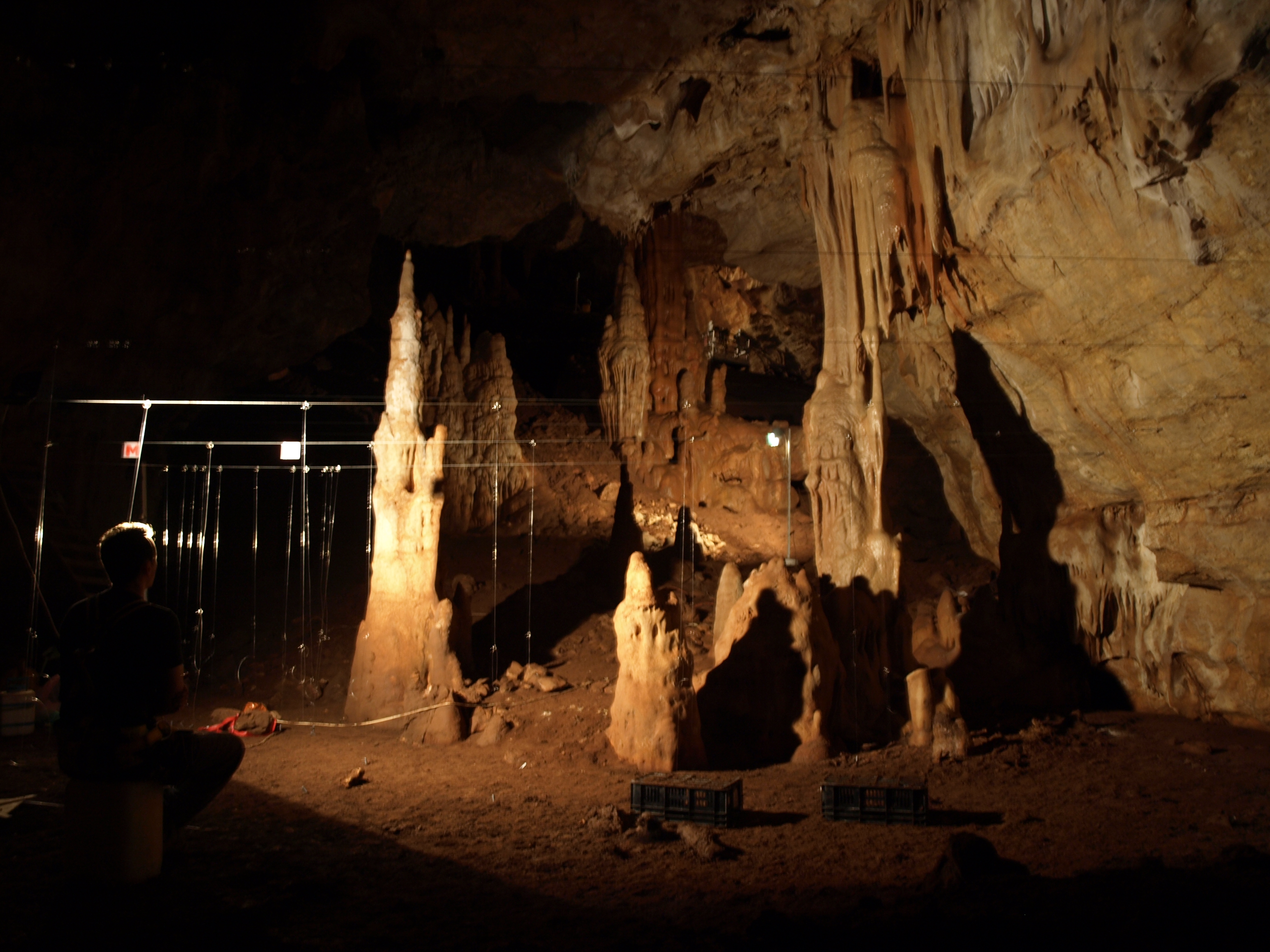A cave in Israel may have once been a ritualistic gathering site for early humans some 35,000 years ago, likely making it the earliest ritual site in Southwest Asia. The multifaceted research team found the ritualistic evidence in Manot Cave — a famous excavation site in Galilee, Israel.
The cave is most notable for the discovery of a 55,000-year-old humanoid skull by a team from Case Western Reserve. The skull helped provide evidence that Homo sapiens and Neanderthals interbred.
The cave provided shelter for H. sapiens and Neanderthals for thousands of years, and the findings published in the Proceedings of the National Academy of Sciences, could help us understand more about their social interactions.
A Spiritual Figure
(Credit Clara Amit, Israel Antiquities Authority)
A rock carved to look like a turtle was placed in a niche in the cavern. The carvings were done approximately 35-37,000 years ago.
According to the study, the cave’s inhabitants lived closer to the cave’s entrance. However, this ritual chamber was deeper into the cave, about eight stories below the entrance. Within the chamber was a carved rock — like a turtle shell — that appeared to have been deliberately placed in a niche. The carving was similar to the oldest cave paintings in France.
“It may have represented a totem or spiritual figure,” said Omry Barzilai, Head of Material Culture PaleoLab at the University of Haifa and the Israel Antiquities Authority, and team leader, in a press release. “Its special location, far from the daily activities near the cave entrance, suggests that it was an object of worship.”
The chamber was large and could comfortably fit a group of people. With its natural acoustics, it would have been ideal for a gathering. Researchers have also found evidence of wood ash on stalagmites, indicating that the cave’s inhabitants used torches to illuminate the chamber.
Read More: 5 of the World’s Most Fascinating Cave Paintings
Caves Tell a Story
Caves provided natural shelter for our ancient ancestors for thousands of years. Luckily, these caves also preserved the artifacts that were left behind.
Some notable finds have included the 20,000-year-old Lascaux cave paintings in France, a 51,000-year-old figure of a human and a pig in Indonesia, and the 64,000-year-old handprint in Maltravieso cave, Cáceres, Spain, that researchers believed were painted by Neanderthals. The inhabitants of Manot Cave weren’t the only ancient people who used caves for various rituals.
Though it is not yet known what rituals took place in this specific chamber, there is evidence that cultures, such as the Mayans, used caves for rituals like human sacrifice.
Identifying Ancient Bones
During a condominium excavation project in 2008, workers accidentally uncovered Manot Cave. In 2012, students from Case Western Reserve’s School of Dental Medicine began assisting archeological teams because of their ability to identify bones from rocks. This made them valuable assets and even led to the discovery of the 2015 skull.
“Most people would not suspect that a dental school would be involved in an archaeological excavation,” said Mark Hans, professor and chair of orthodontics at the dental school, in a press release. “But one of the things that are preserved very well in ancient skeletons are teeth because they are harder than bone. There is a whole field of dental anthropology. As an orthodontist, I am interested in human facial growth and development, which, it turns out, is exactly what is needed to identify anthropological specimens.”
There is still much to learn from Manot Cave and from those who lived there. This new discovery is just the next step in understanding our ancient ancestors.
Read More: Bringing to Light Mysterious Maya Cave Rituals
Article Sources:
Our writers at Discovermagazine.com use peer-reviewed studies and high-quality sources for our articles, and our editors review for scientific accuracy and editorial standards. Review the sources used below for this article:
A graduate of UW-Whitewater, Monica Cull wrote for several organizations, including one that focused on bees and the natural world, before coming to Discover Magazine. Her current work also appears on her travel blog and Common State Magazine. Her love of science came from watching PBS shows as a kid with her mom and spending too much time binging Doctor Who.










Leave a Comment